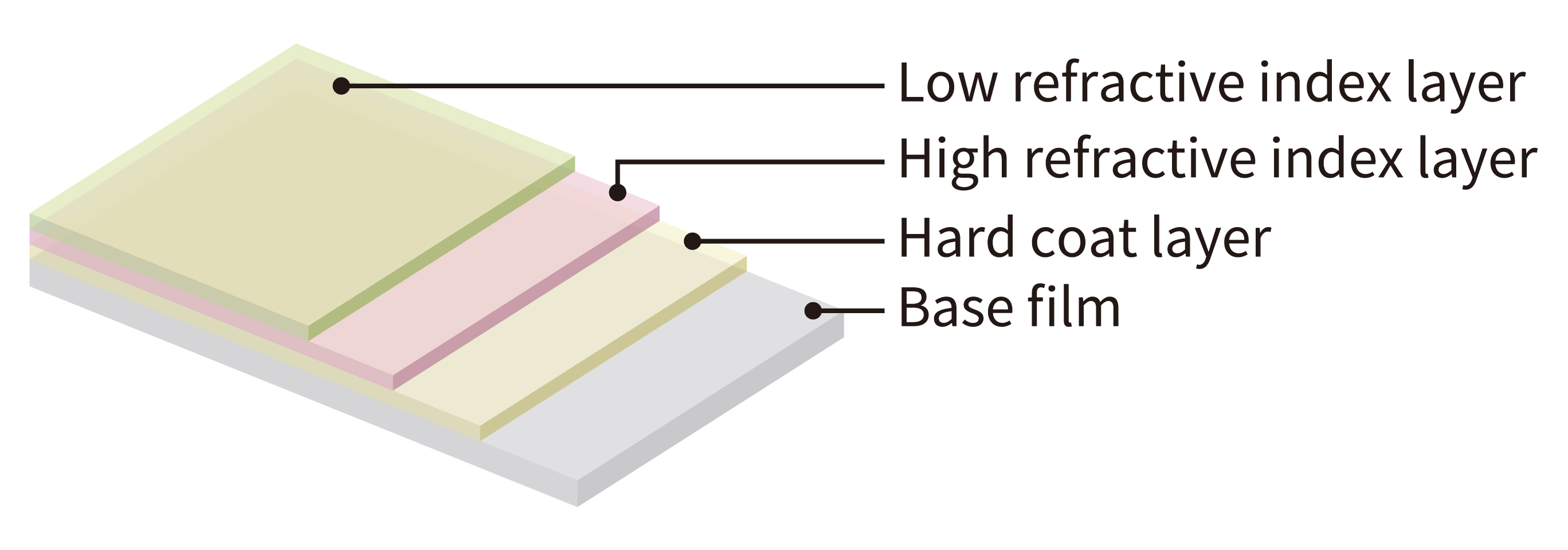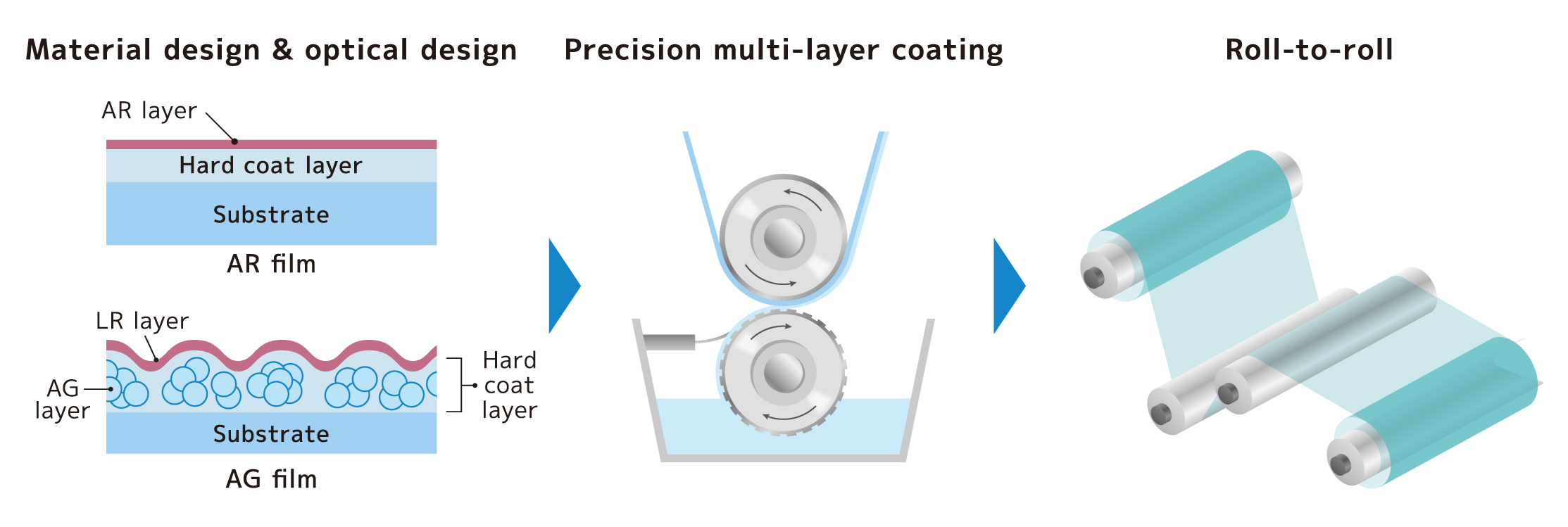Achievement of "roll-to-roll" processing that enables continuous mass production of high-quality products
Roll-to-Roll Technology for Mass Production of Optical Film
DNP has achieved "roll-to-roll" processing that enables continuous mass production of high-quality optical film products by utilizing its proprietary advanced "web handling" and highly productive "inline multi-layer coating" technologies.
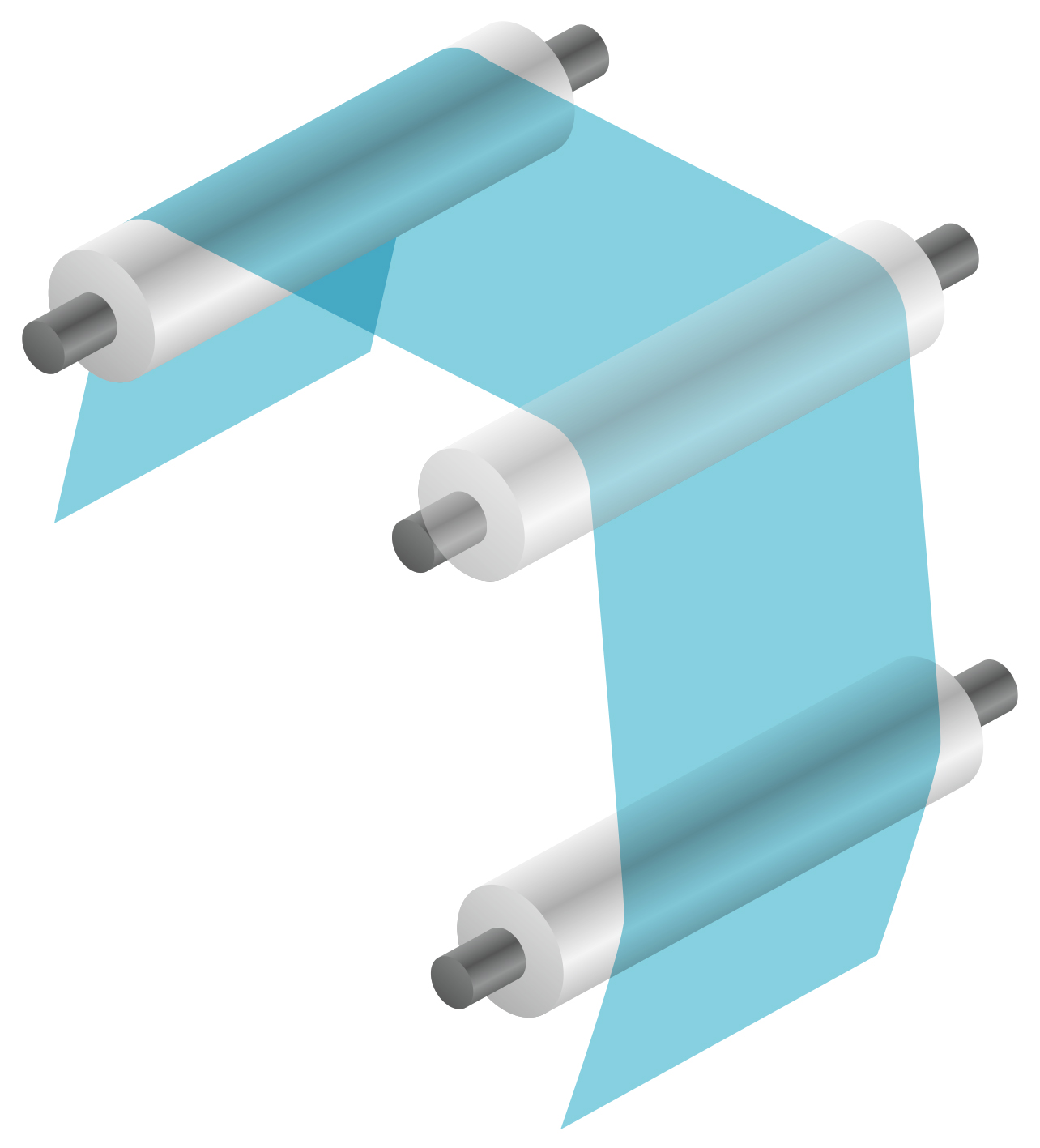
- What is roll-to-roll?
- Two technologies for enhancing roll-to-roll productivity
- DNP's optical film - strengths in manufacturing processing
- DNP's optical film
- For roll-to-roll technology design, turn to DNP
- DNP in Electronics
What is roll-to-roll?
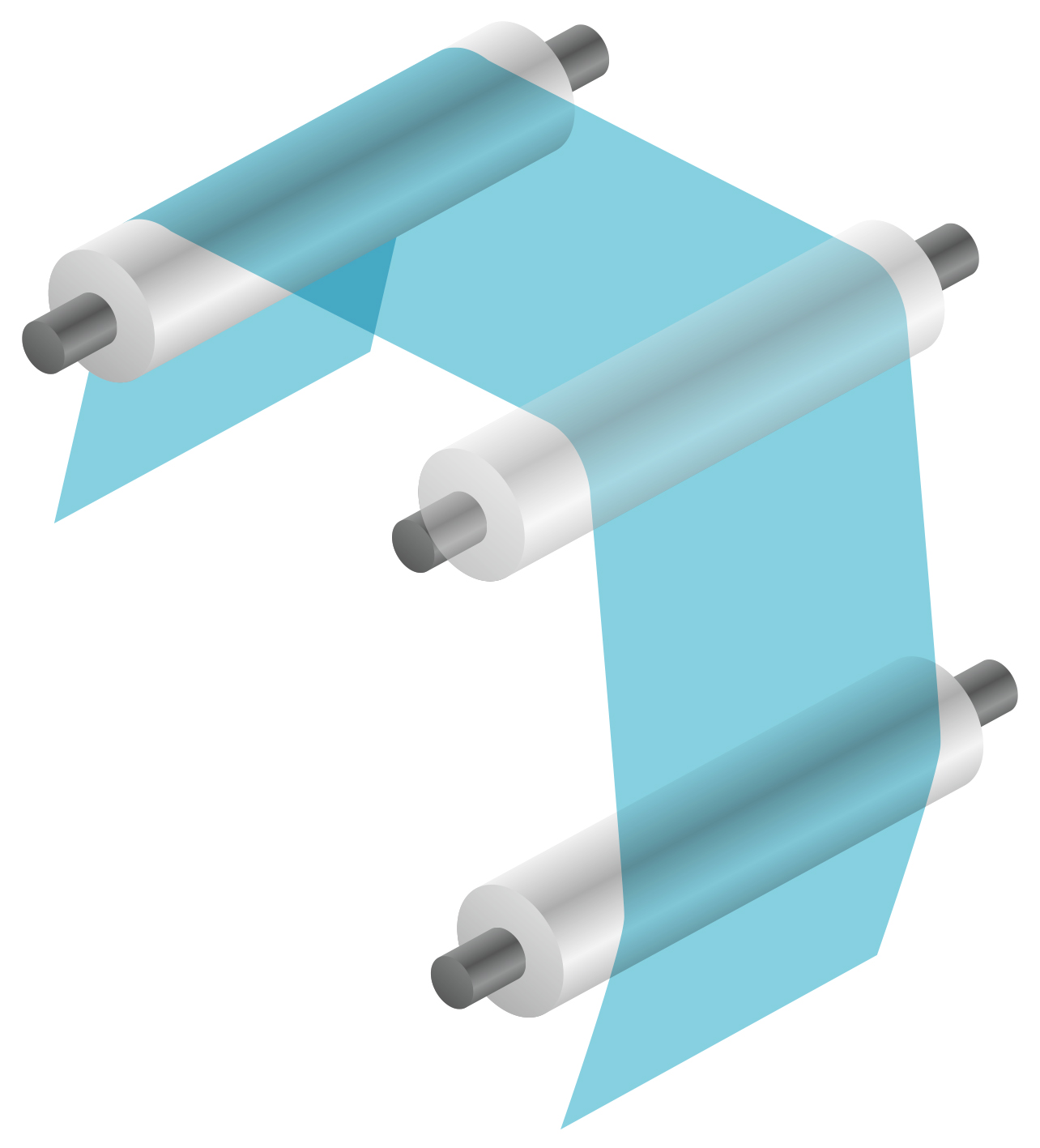
|
|---|
"Roll-to-roll" is a production method in which a film substrate unwinds from a roll, passes through processing devices, then rewinds onto another roll to create a product. This method enables continuous film processing, resulting in high productivity and lower costs compared to individually processing cut film substrates in a single-wafer form. However, due to the continuous processing, there are certain restrictions on processing conditions which present production challenges. Nevertheless, DNP has successfully implemented "roll-to-roll" processing by employing advanced "web handling" and highly efficient "inline multi-layer coating" technologies.
Two technologies for enhancing roll-to-roll productivity
Web handling: controlling the behavior of continuous films
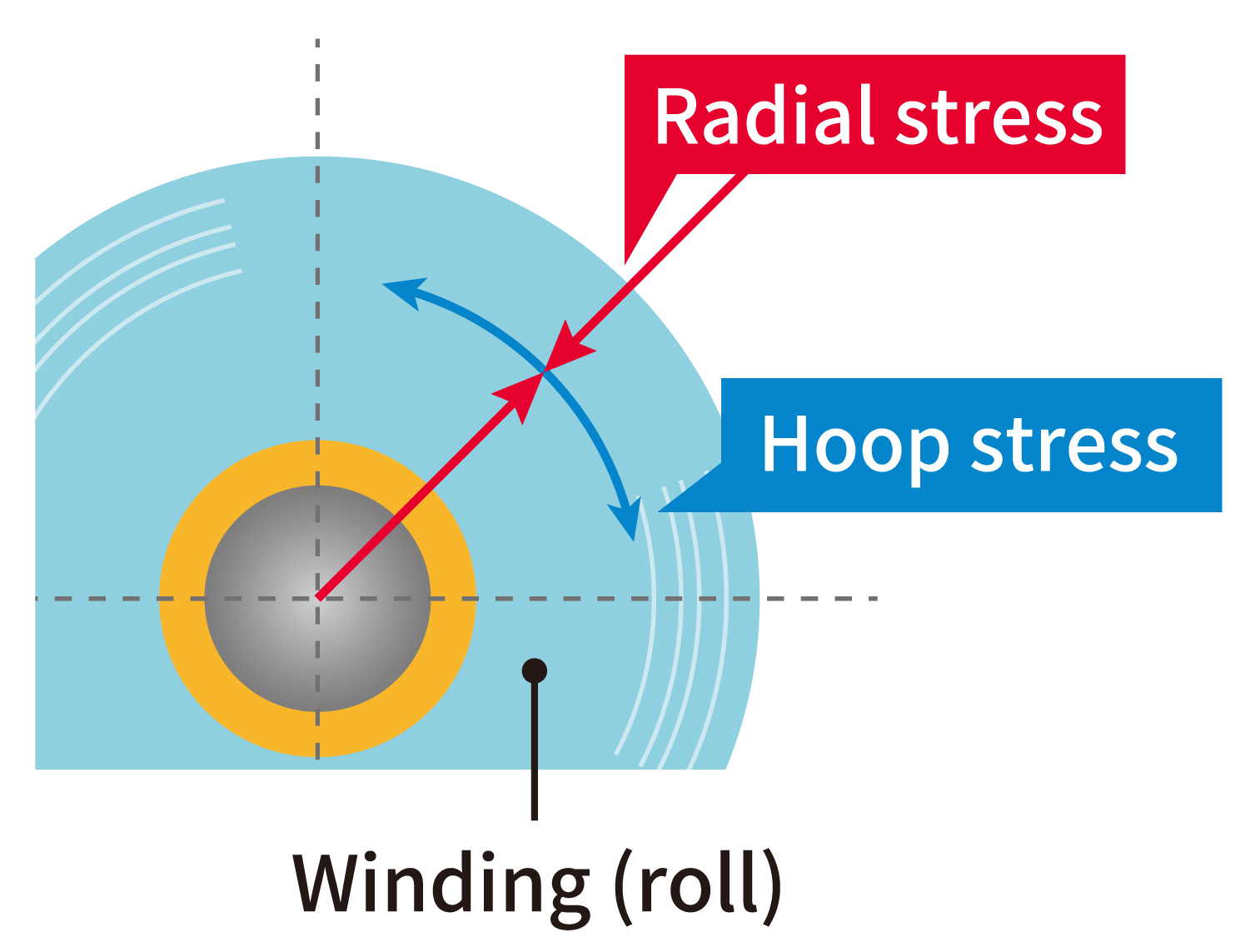
|
|---|
Web handling is a sophisticated technology essential for precisely controlling the movement of the long, thin materials (webs), such as films, during winding and processing operations. This technology minimizes common issues, including web breaks, wrinkles, and dimensional variations, enabling stable processing at high speeds.
In roll-to-roll processes, web handling technology ensures consistent product quality by preventing defects such as wrinkles, scratches, and creases while maintaining proper alignment throughout processing, transport, winding, and storage.
DNP has developed theoretically grounded technologies that focus on three critical parameters: transport tension, nip pressure, and winding tension. These parameters are crucial for maintaining web quality throughout the process. These innovations have led to proprietary solutions that prevent web slippage and damage on guide rolls while enabling high-speed winding operations. The technology can be fine-tuned to accommodate varying film thicknesses and materials, thereby optimizing process conditions for each specific application.
Consequently, web handling serves as a cornerstone technology that underpins both productivity and quality in roll-to-roll manufacturing processes.
In-line multilayer coating: advanced technology for efficient, high-quality production
In-line multilayer coating is an innovative production method that enables the simultaneous application of multiple layers onto a film substrate in a single pass, from unwinding to rewinding. This continuous, single-line process ensures superior production efficiency and consistent coating quality.
In roll-to-roll operations, this technology plays a crucial role by enabling the seamless application of multiple coating layers as the film progresses through the unwinding and rewinding stations.
On DNP's production lines, this advanced technology facilitates the efficient manufacturing of premium multilayer-coated products in just a single pass through the system. This streamlined approach significantly reduces the risks of contamination and dramatically improves productivity compared to traditional methods that require multiple passes through the production line.
|
|
DNP's optical film - strengths in manufacturing processing
|
|
Optical design
DNP leverages its accumulated optical design expertise to optimize properties like transparency, reflectance, and contrast for optical films. Additionally, various functions such as hardness, anti-scratch, adhesion, durability, and antistatic properties can be added according to customer's requirements.
Material design
Careful consideration of ink material design is vital. To avoid issues like ink repulsion, uneven thickness, or insufficient hardness, the ink's physical properties and characteristics, like viscosity, need attention. DNP crafts its own inks, ensuring high-quality lamination and swift development of film products meeting even complex demands like multi-layer coating.
Inline multi-layer coating
The inline multi-layer coating technology is essential for delivering high-performance, top-quality optical films like AR/AG films at affordable prices. With multi-layer coating capabilities of up to three layers, DNP can mass-produce optical films boasting features such as anti-glare, contrast enhancement, anti-static, hard-coating, and low reflection.
Ultra-wide coating
Available in 2500mm width
DNP's production lines accommodate up to 2500mm width, meeting the demand for larger LCDs. While maintaining uniform coating thickness on wider products poses challenges, DNP's advanced processing technology ensures even coatings.
High quality even with mass production
For mass-produced wide optical films, DNP employs the roll-to-roll process, achieving high productivity alongside advanced quality via meticulous process technology and defect-detecting inspection machines.
Manufactured in a clean environment (cleanliness)
The functional layer of optical film is thin, ranging from several hundred nm to several microns in thickness, and strict quality control is required as the presence of even the smallest dust particles can result in defective products. DNP manufactures optical film in clean rooms with strict entry control everywhere from unwinding to winding, and maintains a high level of cleanliness, especially in the coating and drying processing equipment.
DNP's optical film
Anti-reflection film(AR film)
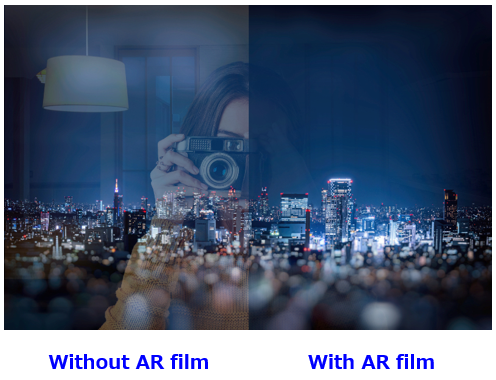
|
|---|
AR film, and LR film(Low-reflection film) are optical films with an anti-reflection layer. By taking advantage of light interference at the AR layer, reflected light can be reduced on a screen, and its transmittance can be improved.
AR film reduces the effects of ambient light on display screens and allows them to be seen more clearly.
Anti-glare film(AG film)
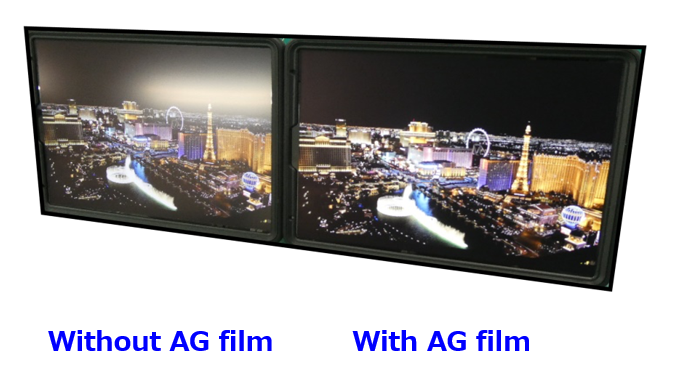
|
|---|
AG film reduces outside light reflection by diffusely reflecting incident light on an uneven surface, distinct from AR film utilizing light interference. AG film uses a hard coat layer with deposited particles on the base film to achieve its effect, unlike AR film which relies on light interference. These films can even be combined for further reduced ambient light reflection.
For roll-to-roll technology design, turn to DNP
DNP possesses extensive know-how in the design and manufacturing of functional films utilizing roll-to-roll technology. Please feel free to consult us.
DNP in Electronics
|
|
Other than listed above, DNP’s Electronics segment has a wide range of products for digital interface (display-related) and semiconductor.
You can check further our product line-up here and find anything to accommodate your needs.
